PROJECT 2 -
EXERCISE 1.3: LINE
PART 1
"Take a number of shots using lines to create a sense of depth. Shooting with a wide-angle lens (zooming out) strengthens a diagonal line by giving it more length within the frame. The effect is dramatically accentuated if you choose a viewpoint close to the line."

PART 2
"Now take a number of shots using lines to flatten the pictorial space. To avoid the effects of perspective, the sensor/film plane should be parallel to the subject and you may like to try a high viewpoint. Modern architecture offers strong lines and dynamic diagonals, and zooming in can help to create simpler, more abstract compositions.

"Review your shots from both parts of the exercise 1.3. How do the different lines relate to the frame? There's an important difference from the point exercises: a line can leave the frame. For perpendicular lines this doesn't seem to disrupt the composition too much, but for perspective lines the eye travels quickly along the diagonal and straight out of the picture. It feels uncomfortable because the eye seems to have no way back into the picture except the point that it started from. So another 'rule' of photography is that 'leading lines' should lead somewhere within the frame.
In relation to the frame...
Part 1
The shots in part 1 are more appealing to the eye. They take you on a journey through the photo. They give the impression that there is or was something more surrounding and beyond the photo. They create a scene and are almost like a back drop in an old film or play that is used to make the space look bigger. Shooting the viewpoint close to the frame allows the eye a starting point. The eye then follows the vertical lines searching to see what it might find at the end. A bit like looking for the pot of gold at the end of a rainbow.
Each shot in part 1 tells its own interpretation of a story and each leading line will end in a different destination.. The shots in part 1 contain a number of diverse elements building the composition, whereas the shots in part 2 are all of the same 'uniform'.
Part 2
'Abstract' is definitely the right word to describe the shots in part 2. The strong lines make up many different patterns but all seem flat and calm with predictable repetition. The shots in part 2 are not as exciting or imaginative as part 1 but they are all different in their own way. For me they don't encourage the mind to wonder what is past the frame and outside of the shot. They are almost like a metaphorical full stop in the photography world. Like a sentence stops, the photo stops where the frame ends and they are not a visual overload.
A closer look...
Part 1
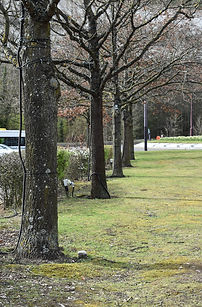
The trees in these two shots create an easy to see leading line within the frame. The eyes are attracted to the trees immediately and they create a good example for perspective as you can clearly see the size of the trees getting smaller in the distance which creates a good sense of depth.

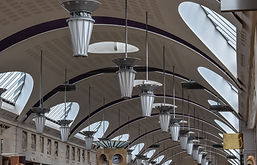
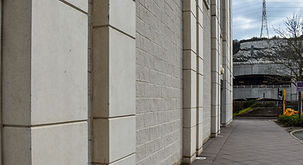
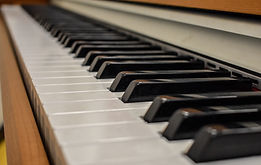
In the shots above there are multiple leading lines. The first shot was taken in my local shopping centre which has some quite interesting architectural designs when you look up. The lights, windows and roof all create a sense of depth.
The second shot again was outside the shopping centre. There are horizontal and vertical leading lines in this shot which create two types of depth. For me, the vertical lines are the most eye catching.
The third photo of the piano allows your eyes to follow both the black and white keys to the the end of the keyboard. The contrast in colour is quite satisfying in this shot.

I enjoy these two shots. You know that the stairs will lead you somewhere and you wonder what lies at the top.
I chose to take these shots at the lowest point of the steps to show how you can clearly see depth is created as the steps get narrower leading up to the highest point. I think the shot on the right is the most effective out of the two as it has sharp straight lines, whereas the steps in the shot on the left curve round and are not as bold or strong.



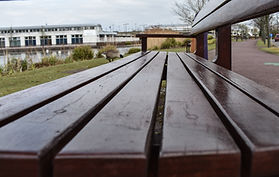
Although these shots were taken as close ups, they accentuate the viewpoint and show a distinctive perspective of depth.
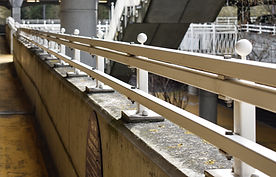
For me, this shot is a prime example of line and depth. The viewpoint is close to the frame on the right hand side and you eyes travel along the rail to where it disappears off in the distance.



Out of the set of shots that flatten the pictorial space, I favour these three the most. They each follow a simple pattern that is pleasing to the eye.

This shot has three contrasting sets of lines, each travelling in different directions. Although the lines are conflicting, you still look at the photo as one whole.
Overall, I enjoyed this exercise. It really made me realise just how much our world is made up of strong lines.
It was interesting to play around with angles and viewpoints to get the most effective shots. I took quite a lot of shots and enjoyed walking around my local area. It really opened my eyes to a new way of looking at what has always been right in front of me. It has also helped me to understand the meaning of illusionism better and the way that we can look through a photo.

























